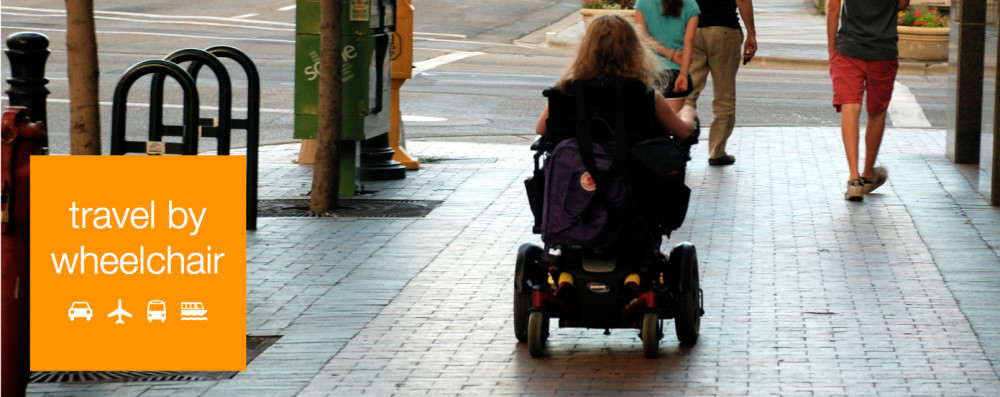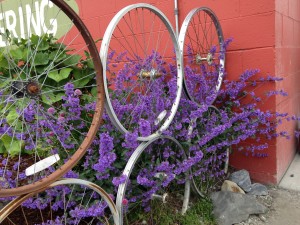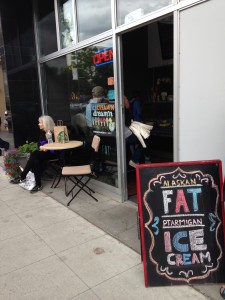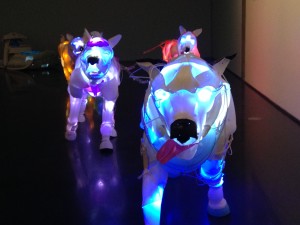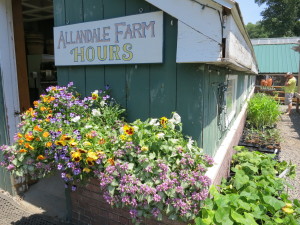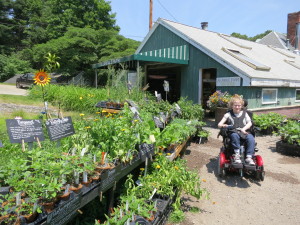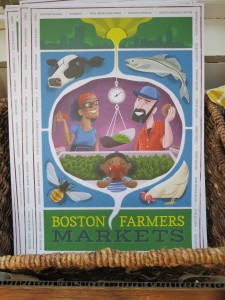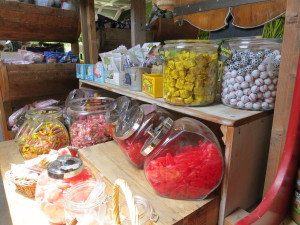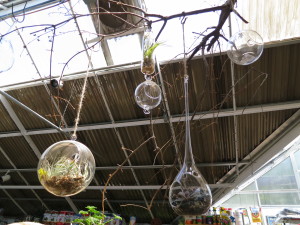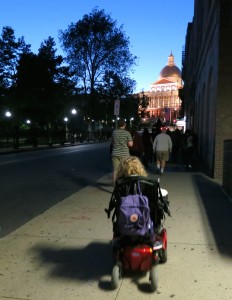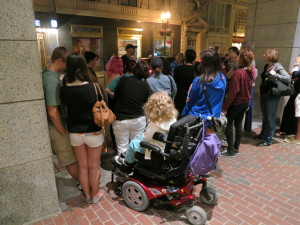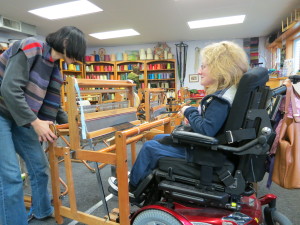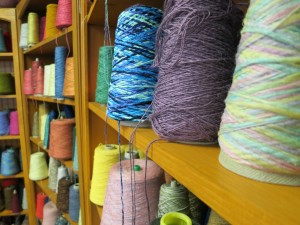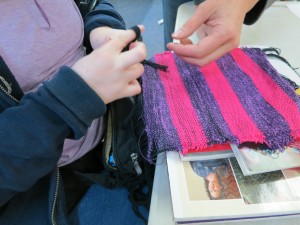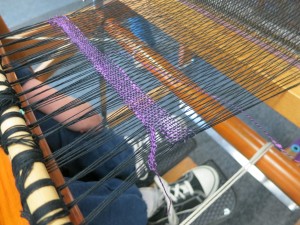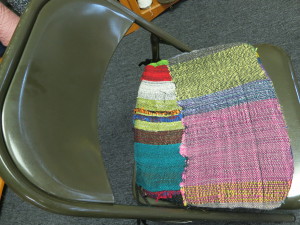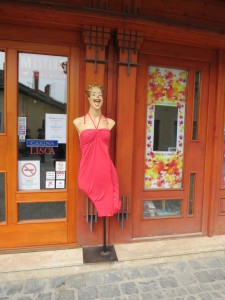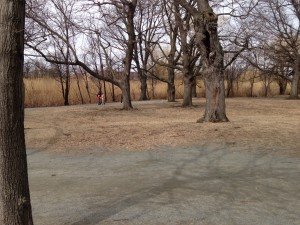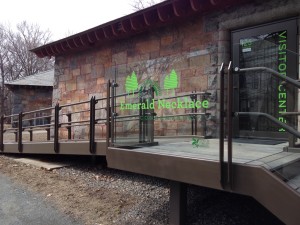“Hotels make you happy” said Marianne, as she settled into her bed last weekend at The Inn at the Mad River Barn in Waitsfield, Vermont. She might be right – at least, in a hotel like this one!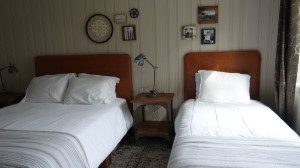
The Mad River Barn is under new ownership, and they’ve lovingly restored this old inn, including accessibility in these areas: guest room (sleeps three) and bath on the first floor, parking, pathways and front entrance, indoor dining area, outdoor patio and restaurant bathroom.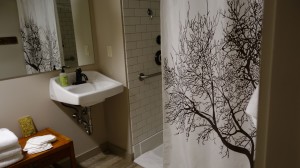
The aesthetic is both modern and re-purposed. The furniture lines are clean and the inn is uncluttered, and yet there is something interesting at every turn, from the old door shellacked and hung as art, to the wall signs made of brightly painted sprockets and the bathroom fixtures made of reclaimed pipe joints. The interior designer, Joanne Palmisano, has two books in print, Salvage Secrets: Transforming Reclaimed Materials Into Design Concepts and Salvage Secrets Design and Decor, both of which are on sale at the front desk or might be available from your library (the first is available through my library).
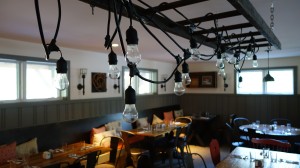 The halls, although they meet ADA standards, left only a little wiggle room for Marianne’s big electric chair, and I was nervous about marring the freshly-painted wood. (We left not a trace, I’m happy to say.) A smaller electric chair or a manual chair wouldn’t have an issue at all.
The halls, although they meet ADA standards, left only a little wiggle room for Marianne’s big electric chair, and I was nervous about marring the freshly-painted wood. (We left not a trace, I’m happy to say.) A smaller electric chair or a manual chair wouldn’t have an issue at all.
Breakfast was included in the very reasonable room rate of $140/per night, and I loved it that efforts were made to provide farm-fresh, healthy meal choices. The inn offers dinner as well, a nice choice for families who want to minimize the number of times they get in and out of the car! The dinner menu met a variety of diets, from the meat-eaters to half-size portions, kid menus, or filling salads. Vermont has several breweries in hot demand right now, and Mad River Barn serves up some of the best.
My only regret is that the upstairs lounge area is not accessible, and it looks like a lot of fun with oversized, cozy-looking chairs, a fireplace, game tables and big screen TV. This is definitely a family-friendly inn, and I hear that plans are underway to create a dog-friendly abode on the property as well.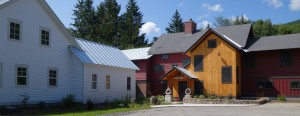
The Mad River Valley is a great destination:
– Waitsfield is a good base from which to access the many programs that Vermont Adaptive Ski and Sports has to offer, both summer and winter.
– Fall foliage season is right around the corner and Vermont’s scenic by-ways include lots of leaf-peeping, quaint covered barns, and idyllic-looking sheep and cows grazing serenely.
– Vermont’s Festival of the Arts runs in Mad River Valley from August 1 through Labor Day, and the Valley Arts Foundation took the time to compile a program that clearly delineates which venues are wheelchair friendly (and kid-friendly too!).
– Check out the Waitsfield Farmer’s Market on the green in Waitsfield on Saturdays, 9 am to 1 pm, mid-May through mid-October.
– We loved the Hen of the Wood restaurant in Waterbury when we dined there a couple of years ago. The Waterbury restaurant is not accessible but the newly-opened Hen of the Wood in Burlington IS accessible. The only catch is that the new and accessible restaurant is in Burlington, about an hour away. 
